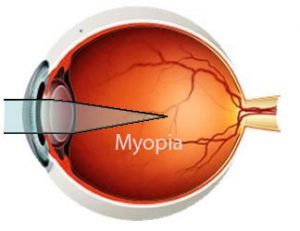- Home
- Editorial
- News
- Practice Guidelines
- Anesthesiology Guidelines
- Cancer Guidelines
- Cardiac Sciences Guidelines
- Critical Care Guidelines
- Dentistry Guidelines
- Dermatology Guidelines
- Diabetes and Endo Guidelines
- Diagnostics Guidelines
- ENT Guidelines
- Featured Practice Guidelines
- Gastroenterology Guidelines
- Geriatrics Guidelines
- Medicine Guidelines
- Nephrology Guidelines
- Neurosciences Guidelines
- Obs and Gynae Guidelines
- Ophthalmology Guidelines
- Orthopaedics Guidelines
- Paediatrics Guidelines
- Psychiatry Guidelines
- Pulmonology Guidelines
- Radiology Guidelines
- Surgery Guidelines
- Urology Guidelines
Specially Designed Lens Slows Down Myopic Progression in Children

The Defocus Incorporated Multiple Segments (DIMS), a spectacle lens was developed by The Hong Kong Polytechnic University (PolyU). It slowed down the progression of myopia in 60% of the participating children, and in 21.5% of the children the progression halted completely. The lens was designed by Carly Lam, Professor of the School of Optometry at PolyU, and colleagues. It won the Grand Prize, Grand Award and Gold Medal with the Congratulations of Jury at the 46th International Exhibition of Inventions of Geneva, 2018.
In myopia, light focuses in front of the retina rather than on it, making distant objects appear blurry. This occurs when the eyeball becomes too long relative to the focusing power of lens and cornea of the eye.
DIMS Spectacle Lens comprises of a central optical zone for correcting refractive error (i.e. myopia and astigmatism) and multi-segments of constant myopic defocus surrounding the central zone extending to mid-periphery of the lens. It provides clear vision and myopic defocus for vision correction simultaneously for the wearer at all viewing distances. In doing so, the lens makes use of the natural homeostatic mechanism known as 'emmetropization', whereby the eyeball adapts and shapes to receive focused images as it does for normal vision.
A total of 160 Chinese children aged 8 to 13, with myopia from 1 to 5 diopters (D), and astigmatism and anisometropia of 1.5D or less completed a randomised double-blinded clinical trial.
Seventy-nine and eighty-one children were randomly assigned to wear the DIMS Spectacle Lenses (treatment group) and the single vision spectacle lenses (control group) respectively. The mean myopic progression of the treatment group over two years was 0.38D whereas the control group was 0.93D.
Myopia occurs when the eyeball is too long relative to the focusing power of the cornea and lens of the eye. Light focuses in front of the retina rather than on it, making distant objects appear blurry. In the trial, the mean increase in eyeball axial length of the treatment group was 0.21mm while the control group was 0.53mm.
In other words, children wearing the DIMS Spectacle Lenses had significantly less myopic progression by 59%, and axial elongation by 60%, as compared with those wearing the single vision lenses.
For the individual, in addition to slow myopic progression, the study shows that wearing DIMS Spectacle Lens stops the progression of myopia in some children. 21.5% of children in the treatment group had no myopic progression whereas only 7.4% of children in the control group had no myopic progression.
Besides, 13.9% of children in the treatment group had no change in axial length changes whereas the control group recorded zero.
The children in the treatment group also indicated that the DIMS Spectacle Lens could provide comfortable, good vision at short and long distances, and good perception of depth same as single vision spectacle lens.
"High myopia can cause retinal complications. The serious case could be a retinal detachment that may result in permanent blindness or visual impairment. The DIMS Spectacle Lens helps safeguard the vision of children," said Professor Lam.

Disclaimer: This site is primarily intended for healthcare professionals. Any content/information on this website does not replace the advice of medical and/or health professionals and should not be construed as medical/diagnostic advice/endorsement or prescription. Use of this site is subject to our terms of use, privacy policy, advertisement policy. © 2020 Minerva Medical Treatment Pvt Ltd